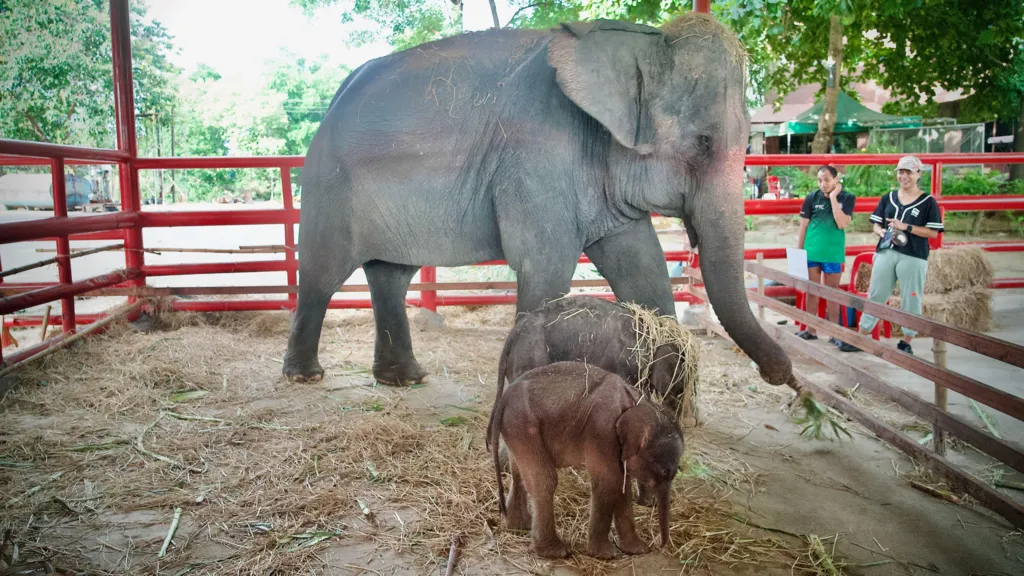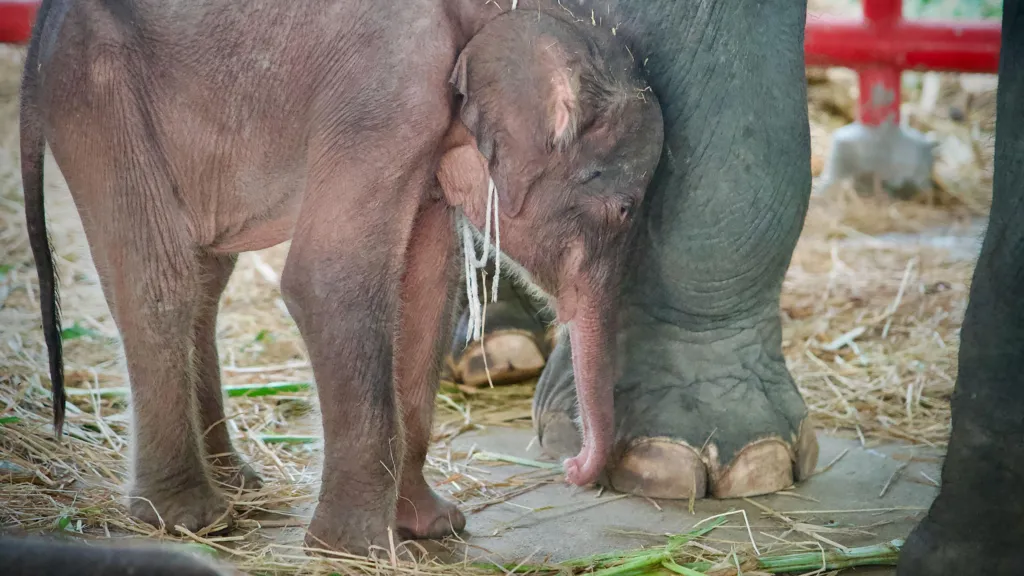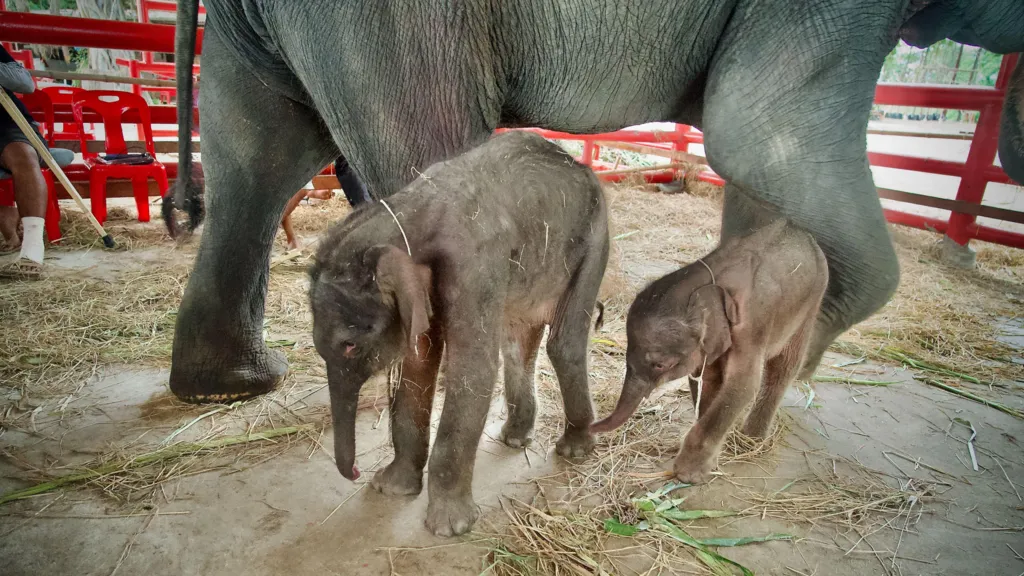In central Thailand, an Asian elephant has delivered a rare set of twins, an event hailed as a miracle by caretakers. The mother, a 36-year-old elephant named Chamchuri, was not anticipated to have twins. On Friday, after she gave birth to a male calf, the staff at Ayutthaya Elephant Palace and Royal Kraal thought the delivery was complete. However, while tending to the first calf, they were surprised by a loud thud and realized Chamchuri had delivered a second calf, a female.

The unexpected second birth caused Chamchuri to panic, and caretakers had to restrain her to prevent any harm to the newborn female. In the ensuing chaos, one caretaker sustained injuries. Dramatic footage on social media captured the frantic efforts of the mahouts (caretakers) to separate the female calf from her mother, with traces of blood from the birth still visible on Chamchuri’s hind legs.
According to Save the Elephants, twins occur in only one percent of elephant births, and male-female twins are even rarer. “When we managed to pull the second baby elephant away from the mother, and it stood up, we were all cheering because it’s a miracle,” said veterinarian Lardthongtare Meepan, who grew up in the elephant park and is also a mother of twins. Charin Somwang, a 31-year-old mahout, broke his leg while trying to restrain Chamchuri. “I was so happy, I couldn’t feel the pain,” he told the BBC, noting he only felt the full extent of his injuries once he was taken to the hospital.

Elephants are revered in Thailand, where they are considered sacred and serve as a national symbol. The Ayutthaya Elephant Palace and Royal Kraal has since featured the twin calves in live streams on social media. Visitors, including children, can see the twins but must disinfect their footwear and hands. A sign near the nursery advises, “Please don’t touch the elephant babies.”
In line with Thai custom, the twins will be named seven days after their birth. Weighing 55kg (121lb), the female calf is slightly smaller than average and uses a stool to feed from her mother, while her brother weighs 60kg (132lb). The park notes that its elephants were rescued from street begging. Following the 1989 ban on logging in natural forests, many mahouts, previously employed in the logging industry, were left jobless, resorting to making elephants perform tricks for tourists. This practice was outlawed in 2010, although rare instances still occur.
In Ayutthaya, some elephants carry tourists to temples and historic ruins, a practice opposed by conservationists who argue it stresses the animals and constitutes abuse. A World Animal Protection (WAP) report highlighted the harsh methods used to train elephants for riding, often starting soon after capture and involving “breaking-in” or “crushing.” In addition to Ayutthaya, elephants attract tourists in highland villages in Chiang Rai and Chiang Mai, where visitors can feed them, walk with them, and bathe them in mud.
The Asian elephant is listed as endangered by the International Union for Conservation of Nature, primarily due to poaching, illegal trade, and habitat loss. Thailand hosts over 3,000 elephants used for tourism, more than any other country. Unlike other nations with captive elephant populations, most elephants in Thailand are privately owned. Compared to African elephants, Asian elephants have smaller ears, rounder bodies, and hunched backs.
Meanwhile, visitors continue to flock to the Ayutthaya park to see the twin calves. The young elephants, seen rolling their trunks on their mother’s leg, reside in a small hay-covered pen. “I am always happy when I see an elephant give birth,” said Mr. Somwang, the recovering mahout. “It doesn’t need to be twins. Elephant babies always bring joy.”
